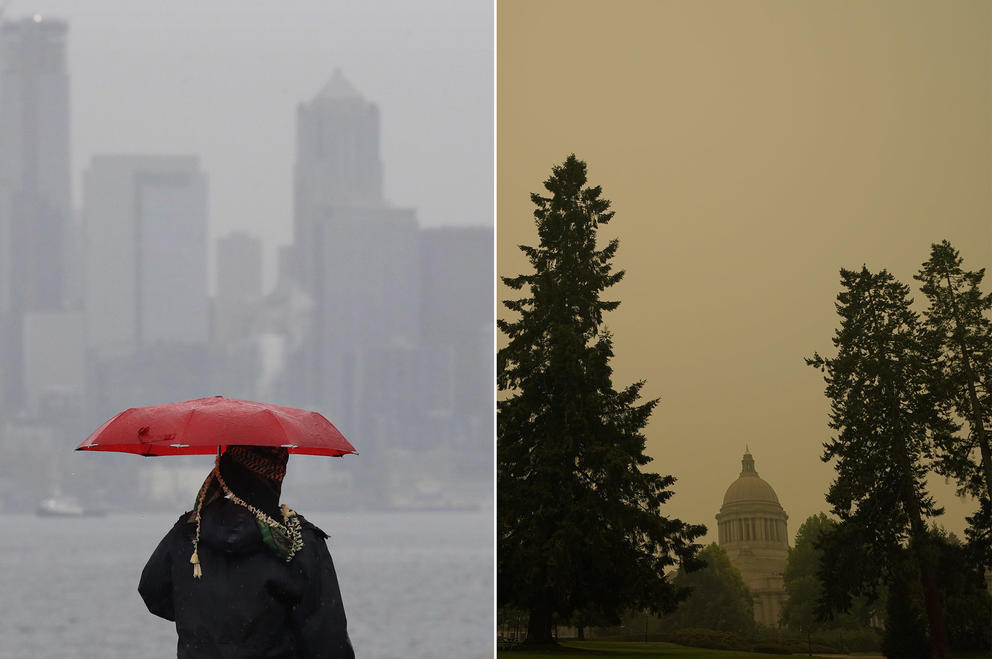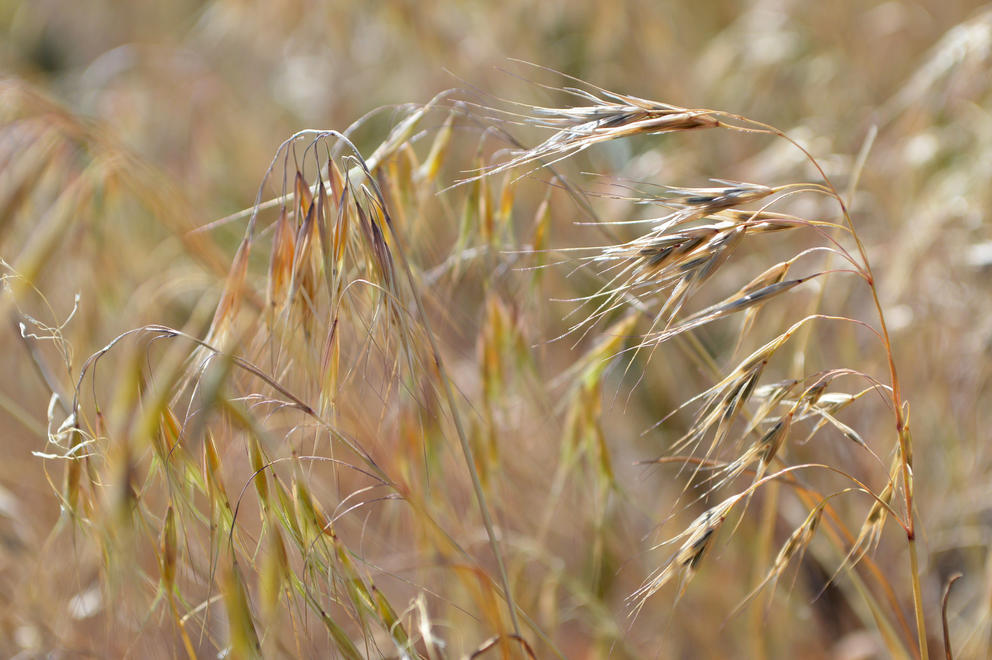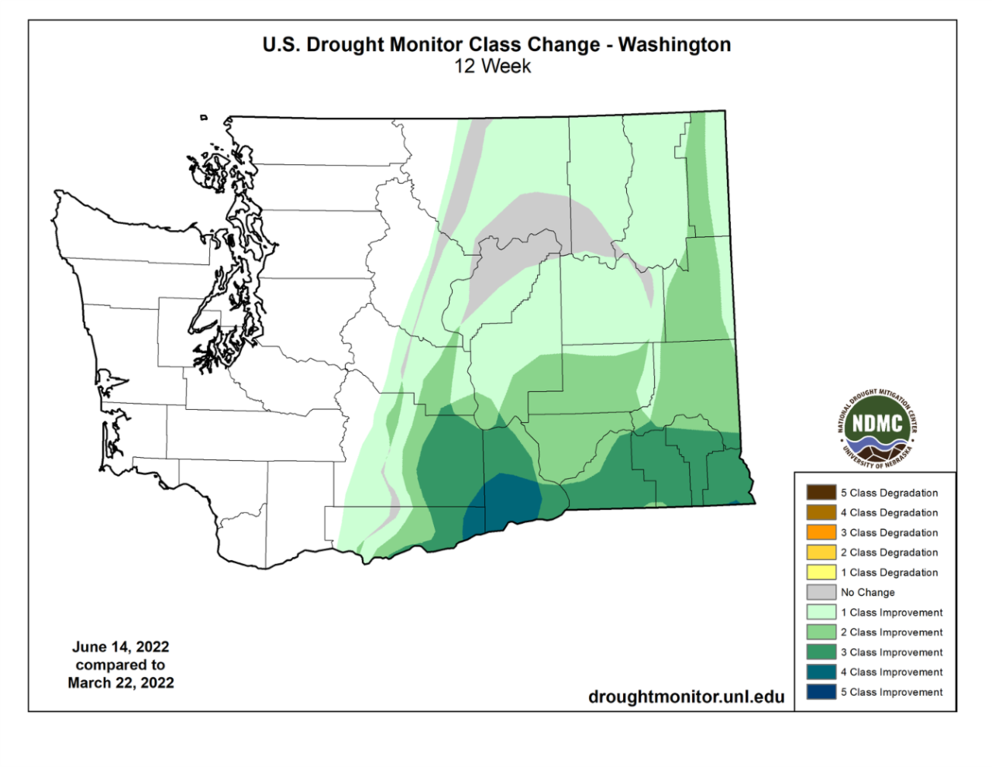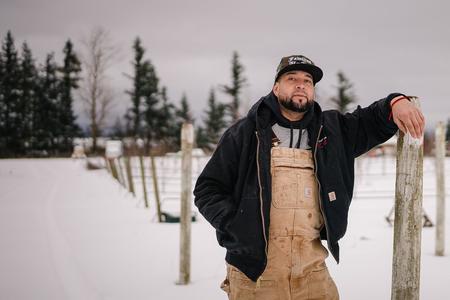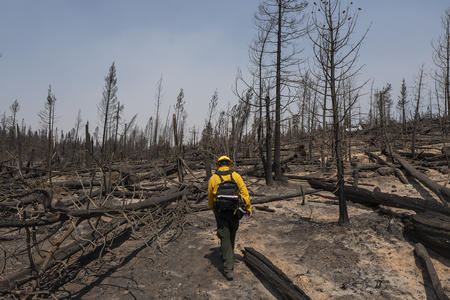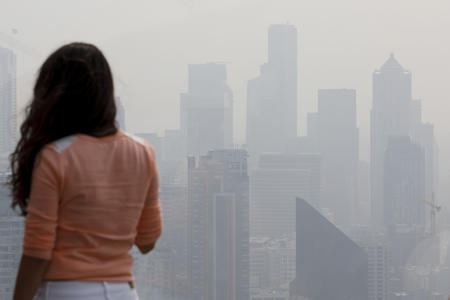Matthew Dehr, a fire meteorologist with the Washington State Department of Natural Resources (DNR), says he’s confident we’ll see a less-intense fire season on the west side of the state this summer. “But I don't know if I'm willing to say that for the east side,” he says.
That’s because rain doesn’t eliminate the risk of wildfires. In some places, spring rains are actually likely to worsen fire risk later in the season. And a lot of that comes down to what happens when you get April showers: May flowers — or in Washington’s case, lots of grass.
Why it’s been a (mostly) calm fire season so far
Rain reduced early-season fire risk, experts say. There are no state-level burn bans across Washington state as of June 23. On DNR land — 5.6 million of the state’s 45.6 million acres — 95 fires have burned 86 acres so far this year as of June 24, compared to 549 fires burning 1,584 acres over the same period last year.
That’s because rain increases soil moisture, which helps tamp down drought levels and also cools the air, keeping temperatures lower. In turn, that prevents live trees and plants from drying out and becoming easy fuel.
This notably wet season can be credited to unusual activity in the La Niña climate pattern, in which strong winds blow warm Pacific Ocean waters westward over many weeks or months, creating a cool, wet winter climate for the Pacific Northwest. But this year, La Niña strengthened through May, something Dehr says has only happened twice since 1950.
The Climate Prediction Center of the National Weather Service forecasts the pattern might continue through the fall and winter, Dehr notes, quickening the end of fire season. Washington’s assistant state climatologist Karin Bumbaco says La Niña isn't typically a player in our summertime weather.
Ultimately, summer weather and how we interact with nature matter much more than any spring climate conditions could, Dehr says. And climate patterns like La Niña might set the stage for fire risk, but extreme weather events that happen on a much shorter time scale are what drive a critical fire weather day, Dehr says. In the likely event of a more short stretches of hot, dry days like this past weekend, that wet, cold spring could really get us into trouble in Eastern Washington. Much of Eastern Washington is at risk of drought, and some of it already is experiencing one. The Climate Prediction Center currently predicts above-normal temperatures and below-normal precipitation in Eastern Washington July through September.
Luckily, weather forecasting technology prevents these events from blindsiding us. Meteorologists are able to forecast up to 10 days into the future. However, John Saltenberger, fire weather program manager with the Northwest Interagency Coordination Center, says they are less confident in forecasts more than five days out. The National Weather Service’s Storm Prediction Center issues critical fire weather outlooks, or forecasts, up to eight days out, but often leaves blank the last six of those days, he says. Early warnings about dangerous conditions can help firefighters organize in time to stop fires in their tracks or catch them quickly.
More than that, rains create conditions that help fires spread more quickly as soon as that hot, dry weather comes.
We’ve got a weed problem
This wet spring shepherded in lots of plants that could dry out easily and turn into fire fuel. According to Dehr, the rain east of the Cascades was timed “almost perfectly” to grow a thick crop of cheatgrass, an especially fire-risky invasive weed, which dries out earlier in the year than native grasses.
Fire scientists call it a “one-hour fuel” because it takes only an hour of hot, dry conditions for it to become flammable. A big dead tree, in contrast, is considered a thousand-hour fuel. Cheatgrass has sprouted particularly well in the lower Columbia Valley, down into the Kittitas, and in the Okanagan. Dehr says his team is most concerned about those three regions right now.
There are no severe drought levels anywhere in the state, but it doesn’t take much to burn these grasses.
Washington's cold, wet spring eased drought considerably throughout the state, says Karin Bumbaco, assistant state climatologist. "At this time, I have no concerns for drought in western Washington. In eastern Washington, we aren't seeing any signs of short-term drought," Bumbaco says. (Courtesy of the U.S. Drought Monitor)
“We typically see grass and cheatgrass that grows anywhere from eight to 12 inches, and this year we're seeing it over two feet tall,” says D.J. Goldsmith, deputy fire chief of the Yakima Fire Department. More dry plant fuel means intense fires that spread fast, stressing fire crews with limited resources.
These fast-burning fuels are already presenting problems for Yakima County. During a fire call in Naches Wednesday evening, the fires were burning more intensely than Goldsmith expected, with notably tall flames and sparks jumping roads. “I was actually pretty impressed. I didn't think we were that dry yet,” he says.
The cheatgrass made it worse. Typically, where he might see three- to four-foot flames, these flames burned twice that height.
Marc Eylar, assistant coordinator for the Kittitas County Noxious Weed Control Board, says lots of other annual weeds and grasses are growing well this year.
And weed experts like Eylar, who works regularly with ranchers and farmers, say it will be bad if the grasses dry out before someone grazes or mows them. Cheatgrass is so prevalent that it’s not managed or controlled as a noxious weed. “Most years it's kind of a challenge to find enough range for a lot of the livestock herds around here, but this year, it's almost been the opposite. There's so much food this year that I've heard even ranchers say they don't even have enough cows to graze it, which is an unusual thing to have,” Eylar says.
Anyone with grassy acreage should consider trying to create defensible space around homes and buildings by removing these grasses — especially non-native ones, which tend to be the best fire fuel.
The state department of natural resources does not have programs to remove fine fuels like cheatgrass explicitly for fire prevention. However, they do mow a few sites to reduce grass fuels in advance of fire season on the West side of the state, and do a lot of weed control in Eastern Washington, generally, says department representative Thomas Kyle-Milward.
As meteorologists monitor for lightning and big winds that start and spread fires, scientists and firefighters alike are concerned that people are breathing sighs of relief about rain. They worry people will be less cautious when starting campfires, grilling, or burning yard waste and debris outside, especially on high-burn weekends like July 4th.
“People getting careless with debris burns have been our number-one cause of fires so far this year. And I can see that continuing into the early summer,” Dehr says.
Goldsmith says he’s hearing less concern from locals about the coming season, but in his mind, the season is just delayed. “[Even] a normal fire season is still a bad fire season in Washington,” he says.
How we’re preparing for wildfire
One silver lining of this wet season is that there's been more time for firefighters to prepare, and to train them. “We don’t want to sit back on our laurels,” says Angie Lane, who works on fire intelligence, planning and firefighting training with the state Department of Natural Resources.
Washington state employs 602 funded fire personnel, with slightly more firefighters than in past years. Last year, the natural resources department issued 6,050 incident qualification cards to people who are qualified to fight fires.
But there’s still concern about hiring enough firefighters. Bringing in firefighters from other states and countries thanks to mutual-aid agreements can help. “The worry point would be, what's happening in those other areas, if they need those resources at the same time we do,” Lane says.
Concern about competition for resources is something Saltenberger has been hearing from his vantage point as a regional fire meteorologist. “Many of our existing resources are down in Southern California, Arizona and New Mexico right now. Eventually, we'll have to pull them back,” he says.
Looking to the future, Washington can’t rely on rains to reduce wildfire risk. “At some point it doesn't really matter… how much rain we get in the spring, the summer is still going to be hot and dry,” Dehr says. “We're gonna keep burning more and more acres in the Pacific Northwest if we don't have better management practices, if we don't start adapting to climate change a bit.”
Despite the very low risk of an extreme fire season in Western Washington, there’s always a chance of wildfire smoke blowing in from states and countries well beyond our borders. Experts recommend weatherproofing your living situation, buying or building an air filter, keeping tabs on air quality alerts, wearing masks (like N95s) during smoke events, and identifying other ways to limit your exposure in advance of wildfire smoke.

